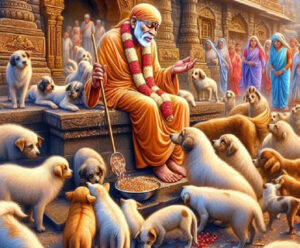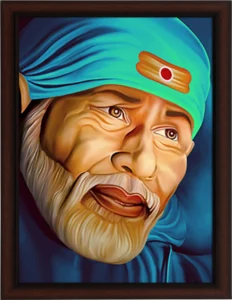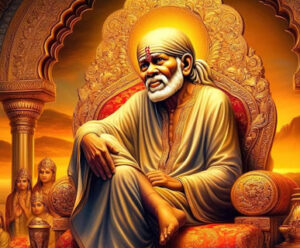- 40B, First Floor, DDA Flats, Shahpurjat, Delhi - 110049
- +91 7290042227
- info@ssbf.co.in
- Home
- SSBF Foundation
- Movies & Series
- Books
- World Tour
- Shop
- Contact Us
 Sai Baba of Shirdi is one of India’s most beloved and revered spiritual figures, a beacon of love, compassion, and unity. His life transcended religious, caste, and creed boundaries, bringing together people of all faiths through his teachings and miraculous acts. Though his birth remains a mystery, the profound impact of his life continues to resonate with millions of devotees around the world. His life story is one of divine grace, humility, and the power of universal love.
Sai Baba of Shirdi is one of India’s most beloved and revered spiritual figures, a beacon of love, compassion, and unity. His life transcended religious, caste, and creed boundaries, bringing together people of all faiths through his teachings and miraculous acts. Though his birth remains a mystery, the profound impact of his life continues to resonate with millions of devotees around the world. His life story is one of divine grace, humility, and the power of universal love.
The exact date and location of Sai Baba’s birth remain unknown, adding to the mystical aura surrounding his life. It is believed he was born around 1838, possibly in a small village near Shirdi, Maharashtra. While some claim he was born in Pathri, others suggest different locations. His parentage is also shrouded in mystery, with some believing him to be born to Hindu parents, while others say he was of Muslim descent.
As a child, Sai Baba displayed extraordinary spiritual tendencies—often meditating under trees, demonstrating wisdom beyond his years. Raised by a Muslim ascetic (fakir), he was recognized for his divine potential even in his early years.
 Sai Baba’s journey to Shirdi began around 1854, when he arrived as a young man with a radiant aura. Initially met with skepticism, he quickly won the villagers’ hearts with his peaceful demeanor and spiritual presence. By 1858, he made Shirdi his permanent home and chose to reside in a dilapidated mosque, known as Dwarkamai (Mother Dwarka). This became the center of his teachings, where he bridged the gap between Hindu and Muslim traditions, advocating unity, peace, and love.
Sai Baba’s journey to Shirdi began around 1854, when he arrived as a young man with a radiant aura. Initially met with skepticism, he quickly won the villagers’ hearts with his peaceful demeanor and spiritual presence. By 1858, he made Shirdi his permanent home and chose to reside in a dilapidated mosque, known as Dwarkamai (Mother Dwarka). This became the center of his teachings, where he bridged the gap between Hindu and Muslim traditions, advocating unity, peace, and love.
Despite his appearance as a Muslim fakir, Sai Baba used Hindu terminology, celebrated Hindu festivals, and chanted Vedic hymns, making him a symbol of Hindu-Muslim unity. His teachings transcended religious boundaries, emphasizing that “Sabka Malik Ek” – God is One.
Sai Baba’s message was simple yet profound:
His teachings were practical and deeply rooted in everyday life, helping his followers navigate the challenges of life with faith and patience.
 Sai Baba’s life was marked by countless miracles, each a testament to his divine nature:
Sai Baba’s life was marked by countless miracles, each a testament to his divine nature:
These miracles weren’t just demonstrations of power but were meant to inspire faith and devotion in his followers.
Sai Baba knew the time of his departure was near. In his final years, he hinted at his Mahasamadhi, or conscious departure, a significant moment in the life of a saint. On October 15, 1918, during the Hindu festival of Vijayadashami (Dussehra), Sai Baba left his mortal body, leaving a profound void in the hearts of his followers. His body was laid to rest in the Samadhi Mandir in Shirdi, which has since become one of the holiest pilgrimage sites for millions of devotees.
 Sai Baba’s legacy continues to grow, and his teachings are more relevant today than ever. His message of universal love, compassion, and unity resonates with people from all walks of life.
Sai Baba’s legacy continues to grow, and his teachings are more relevant today than ever. His message of universal love, compassion, and unity resonates with people from all walks of life.
Sai Baba’s life and teachings remind us that the path to divinity lies in love, compassion, and selfless service. His simple yet powerful assurance, “Why fear when I am here?”, continues to guide and comfort millions, making him an eternal beacon of hope and love. His life exemplifies the belief that God is One, and that faith, devotion, and unity can overcome all obstacles.
Although Sai Baba left his physical form over a century ago, his presence continues to be felt by millions. Devotees claim to experience his blessings in times of need through dreams, visions, and unexplained miracles. The sacred Udi (holy ash) distributed at the Samadhi Mandir carries his divine grace, offering comfort and hope to those who seek his blessings.
As we honor the divine teachings of Sai Baba, let us come together to spread his message of peace, love, and unity across the world.